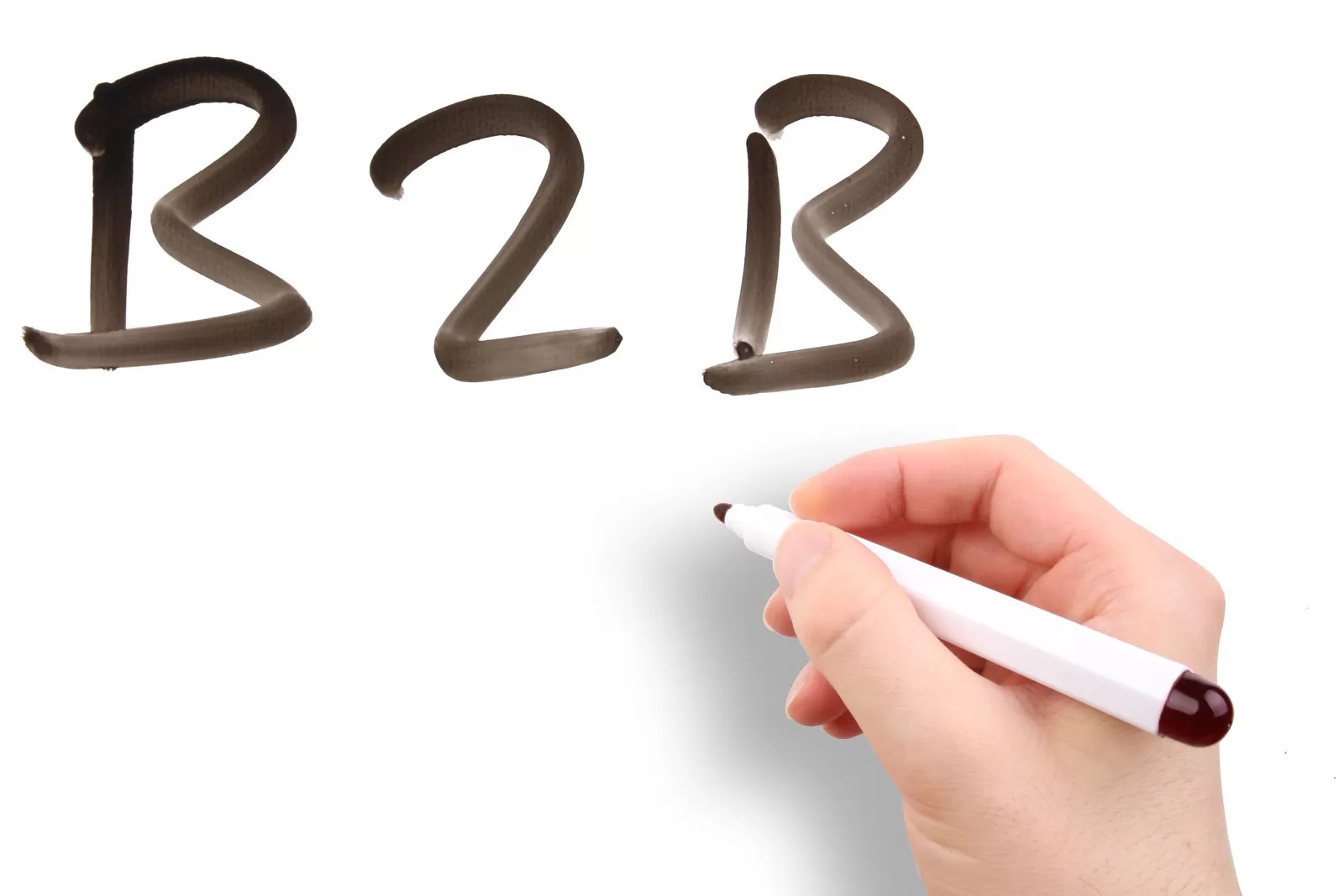B2B vs B2C
What is a B2C website?
A B2C website is a type of website that is designed to facilitate direct interaction between businesses and individual consumers. The acronym B2C stands for “Business-to-Consumer.” A B2C website is an online platform allowing companies to sell products or services directly to customers. B2C websites are designed to be user-friendly, focusing on providing customers with an easy and enjoyable experience. This is achieved through various features, such as product reviews, product comparisons, online ordering, and payment processing. B2C websites may offer customer support through online chat, email, or phone. Examples of B2C websites include e-commerce sites like Amazon and Walmart, online food delivery services like Grubhub and DoorDash, and travel booking sites like Expedia and Booking.com. These websites offer various products and services, from clothing and electronics to food and travel accommodations. To succeed, B2C websites need to build trust and establish a solid brand identity. This can be accomplished through high-quality product descriptions, customer reviews and testimonials, and responsive customer support. The ultimate goal of a B2C website is to attract and retain customers and generate revenue through the sale of products or services.
What is a B2B website?
A B2B website is a type of website that is designed specifically for businesses to engage with other companies. B2B stands for “Business-to-Business,” and these websites serve as online platforms for businesses to connect, communicate, and transact with one another. Unlike B2C websites primarily focused on individual consumers, B2B websites are designed to be more professional and informative. They often include detailed product or service information, pricing and purchasing options, and customer support resources tailored to the needs of businesses. Examples of B2B websites include marketplaces like Alibaba and ThomasNet, where businesses can search for suppliers and manufacturers to source materials and products for their operations. B2B websites may also include service providers such as consulting firms, marketing agencies, and other businesses that offer specialized services to other companies. To succeed, B2B websites need to establish trust and credibility with their target audience, typically made up of other businesses and professionals. This can be achieved through industry-specific language and terminology, case studies, and testimonials from satisfied clients. Overall, B2B websites are essential for businesses looking to connect with other companies, engage in commerce, and grow their operations.
What are the differences between a B2C website and a B2B one?
The primary difference between B2B and B2C websites is the intended audience. A B2B website is designed to cater to businesses seeking products or services for their operations, while a B2C website is designed to serve individual consumers.
B2B websites are typically focused on providing comprehensive information about the products or services offered, which may include technical specifications, pricing information, and support resources relevant to businesses. These websites often use formal language and industry-specific terminology designed to appeal to business owners, executives, and professionals seeking specific solutions to their operational challenges.
Examples of B2B websites include marketplaces like Alibaba and ThomasNet, which offer a wide range of products and services relevant to businesses of all sizes. These websites may have features like bulk purchasing, flexible payment and financing options, and specialized support resources such as procurement assistance.
On the other hand, B2C websites are designed to cater to individual consumers seeking products or services for personal use. These websites are typically focused on providing a seamless and enjoyable customer experience, which may include features such as product recommendations, user-generated reviews and ratings, and fast and convenient checkout options.
Examples of B2B websites include marketplaces like Alibaba and ThomasNet, which offer a wide range of products and services that are relevant to businesses of all sizes. These websites may include features such as bulk purchasing options, flexible payment and financing options, and specialized support resources such as procurement assistance.
On the other hand, B2C websites are designed to cater to individual consumers who are seeking products or services for their personal use. These websites are typically focused on providing a seamless and enjoyable customer experience, which may include features such as product recommendations, user-generated reviews and ratings, and fast and convenient checkout options.
Examples of B2C websites include e-commerce platforms like Amazon and Walmart, which offer various products relevant to consumers of all ages and interests. These websites may include free shipping, hassle-free returns, and personalized product recommendations based on browsing history and purchase behavior.
Overall, the critical difference between B2B and B2C websites lies in their target audience, the type of content and features they offer, and the overall tone and style of their messaging. Whether you’re a business owner seeking products or services for your operations or an individual consumer looking to make a purchase, a website can cater to your needs and preferences.
- B2B websites are designed for businesses to engage with other companies, while B2C websites are intended for businesses to engage with individual consumers.
- B2B websites typically provide detailed information about products or services relevant to other businesses, while B2C websites focus on delivering a positive experience for individual consumers.
- B2B websites may include features such as product catalogs, pricing information, and customer support resources tailored to the needs of businesses. In contrast, B2C websites may have features such as product reviews, product comparisons, and online ordering and payment processing.
- B2B websites often use formal language and industry-specific terminology, while B2C websites are more conversational and may use informal language.
B2C Trends:
- Increased focus on customer experience: With the rise of e-commerce, customers have more options than ever before. Brands prioritizing the customer experience through personalization, convenience, and engaging content are more likely to retain loyal customers and attract new ones.
- Use of social media for e-commerce: Social media platforms like Instagram and TikTok are becoming more popular for shopping, with brands using these channels to showcase their products and connect with customers.
- Growth of mobile commerce: More and more consumers are using their mobile devices to shop online, making it essential for brands to have mobile-optimized websites and apps.
- The emergence of voice commerce: Smart speakers and voice assistants like Amazon Echo and Google Home are changing how customers shop, with voice search and voice, commands becoming more common.
B2B Trends:
- Increased adoption of e-commerce: While B2B companies have traditionally relied on in-person sales and relationships, many are now turning to e-commerce to reach new customers and streamline their sales processes.
- Use of data analytics for customer insights: B2B companies use data analytics tools to gain insights into customer behavior and preferences, which helps them tailor their products and services to meet customer needs better.
- Emphasis on content marketing: B2B companies use content marketing strategies such as blogging, whitepapers, and webinars to establish themselves as thought leaders in their industries and build trust with potential customers.
- Use of AI and machine learning: B2B companies increasingly use AI and machine learning technologies to automate lead generation, sales forecasting, and customer service, freeing up staff to focus on higher-level tasks.
what does a b2c website use to track?
A B2C (business-to-consumer) website typically uses various tracking mechanisms to monitor user behavior, gather data, and improve the overall customer experience.
Here are some common tracking tools and techniques used by B2C websites:
- Cookies: Websites often use cookies to track user preferences, login information, and browsing history. This information helps personalize the user experience and enables targeted advertising.
- Web Analytics: B2C websites utilize web analytics tools like Google Analytics to track and analyze user behavior on their websites. This includes metrics such as page views, bounce rates, conversion rates, and user demographics.
- Conversion Tracking: B2C websites track conversions, such as purchases or sign-ups, to measure the effectiveness of their marketing campaigns. Conversion tracking helps identify successful marketing channels and optimize them for better results.
- Heatmaps: Heatmap tools, like Hotjar, provide visual representations of user activity on a website. They show where users click, scroll, and spend the most time, helping businesses optimize page layouts and improve user experience.
- A/B Testing: B2C websites often perform A/B testing to compare different versions of web pages or elements (such as headlines, images, or call-to-action buttons). By tracking user engagement and conversion rates, they can identify which version performs better.
Now, let’s talk about B2B (business-to-business) and B2C website visualization. Visualization techniques for both types of websites may vary based on their target audience and purpose.
B2B Visualization:
B2B websites often focus on providing detailed product information, specifications, case studies, and other resources that help potential buyers make informed decisions. The visualization on these websites tends to be more professional and data-driven, featuring charts, graphs, and technical illustrations. The design is typically more business-oriented and focused on establishing credibility and trust.
B2C Visualization:
B2C websites aim to capture the attention of a wider consumer audience and create an engaging experience. The visualization on these websites is often more visually appealing, featuring high-quality product images, videos, and interactive elements. The design is focused on showcasing products or services in an attractive and enticing way, with a clear emphasis on user experience and ease of use.
Here are some examples of B2B and B2C websites:
B2B Website Examples:
- Salesforce.com: A cloud-based CRM (Customer Relationship Management) platform for businesses.
- HubSpot: An inbound marketing and sales platform that provides software and services to help businesses grow.
- Dropbox Business: A file hosting and collaboration platform designed for business teams.
B2C Website Examples:
- Amazon: The largest online marketplace that offers a wide range of products to individual consumers.
- Airbnb: A platform that allows individuals to rent lodging and accommodations from hosts around the world.
- Nike: A popular sportswear and athletic shoe brand that sells directly to consumers through their website.
In conclusion, understanding the differences between B2B and B2C websites is crucial for businesses looking to establish their online presence and connect with their target audience. Whether you’re a B2B company looking to expand your customer base, or a B2C company seeking to improve your customer experience, a well-designed website can be a powerful tool for achieving your goals. At VegaTekHub, we specialize in creating custom web solutions that cater to the unique needs of businesses in various industries. Contact us today to learn more about how we can help your business succeed online.
